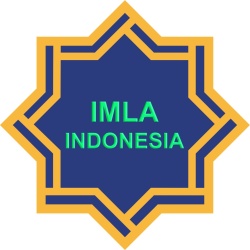Analysis of Arabic Translation in Mahmoud Darwis Poetry: Personification and Metaphor
 DOI:
DOI:
https://doi.org/10.32678/alittijah.v16i2.10316
 Abstract viewed : 342 times
|
Abstract viewed : 342 times
|  PDF downloaded : 258 times
PDF downloaded : 258 times
Keywords:
Poetry, Mahmoud Darwis, Personification and MetaphorAbstract
This study uses a text analysis approach to identify how Arabic translation affects the understanding and interpretation of Darwis's poetry, the methodology used is qualitative descriptive with a focus on the analysis of Mahmoud Darwis' poetry translation, especially in identifying and examining personifications and metaphors. The first is data collection, by selecting poems by Mahmoud Darwis which are translated from Arabic into Indonesian. The selection of poetry is based on the relevance of the use of personification and metaphor as a language style. Furthermore, text analysis is carried out, both in the Arabic version and the translation. The focus of the analysis is a comparison of personification and metaphor translation, as well as changes in meaning that may occur due to the translation process. The study also uses close reading techniques to assess the extent to which the meaning and aesthetic nuances in the original work can be maintained or changed in the translated version. The source of data used in this study is a poem by Mahmoud Darwis entitled "Ajmalu Hubb". By comparing the original text with the translation, this study aims to analyze the Arabic translation in Mahmoud Darwis's poetry in personification and metaphor.
Downloads
References
Al-Maruf, Ali Imron, and Farida Nugrahani. Pengkajian Sastra Teori Dan Aplikasi. Surakarta: CV. Djiwa Amarta Press, 2017.
Ambarini, and Nazla Maharani Umaya. Semiotika Teori Dan Aplikasi Pada Karya Sastra. Semarang: UPGRIS PRESS, 2010.
Crowther, David, and Linne Marie Lauesen. Qualitative Methods. Handbook of Research Methods in Corporate Social Responsibility (2017): 225-229.
Eid, Muna Abu. Mahmoud Darwish: Literature and the Politics of Palestinian Identity. London, New York: Bloomsbury Publishing, 2016.
Endraswara, Suwardi. Metodologi Penelitian Sastra. Yogyakarta: CAPS (Center Academic Publishing Service), 2013.
Hamamra, Bilal Tawfiq. Mahmoud Darwish: Palestines Poet and the Other as the Beloved. Journal of Modern Jewish Studies 19, no. 2 (April 2, 2020): 259-261. https://www.tandfonline.com/doi/full/10.1080/14725886.2019.1699701.
Hikmatul Luthfi. Puisi Perdamaian Mahmud Darwish: Tipologi, Keislaman, Dan Aksi Untuk Palestina. 1. Pariaman: LP Nurul Ilmi, 2013.
Khalidi, Rashid. Remembering Mahmud Darwish (1941-2008). Journal of Palestine Studies 38, no. 1 (October 1, 2008): 74-77. https://www.tandfonline.com/doi/full/10.1525/jps.2008.38.1.74.
Khoironi, Ahmad Arianto. Medan Makna Pembentuk Metafora Dalam Syair Arab Semantic Fields of Metaphore Perfomer in Arabic Poetry. Widyaparwa 46, no. 2 (2018): 119.
Kraovec, Joe. Metaphor, Symbol and Personification in Presentations of Life and Values. Bogoslovni Vestnik 76, no. 3-4 (2016): 571-584.
Kullab, Randa, Looi Wai Ling, and Emily Lau Kui-Ling. Problematising Translation of Cultural Metaphors in the Poetry of Mahmoud Darwish. Asiatic 15, no. 2 (2021): 96-110.
Lahay, Srisna J. Metafora Dalam Kajian Linguistik, Sastra, Dan Terjemahan: Sebuah Pengantar. DIALEKTIKA: JURNAL BAHASA, SASTRA DAN BUDAYA 9, no. 1 (June 28, 2022): 83-95. http://ejournal.uki.ac.id/index.php/dia/article/view/4026.
Mahliatussikah, Hanik. Pembelajaran Puisi Teori Dan Penerapannya Dalam Kajian Puisi Arab. Malang: IKIP Malang, 2015.
Mattawa, Khaled. Mahmoud Darwish: The Poets Art and His Nation. New York: Syracuse University Press, 2014.
Mor, Dalya Cohen. Mahmoud Darwish. Cham: Palgrave Pivot Cham, 2019. http://link.springer.com/10.1007/978-3-030-24162-9.
Nafinuddin, Surianti. Majas (Majas Perbandingan, Majas Pertentangan, Majas Perulangan, Majas Pertautan). Researchgate.Net (2020): 134. https://osf.io/a8rwt/download.
Nawal, Al-Sheikh. Metaphors Stemming from Nature in the Poetry of Mahmoud Darwish. International Journal of English and Literature 12, no. 2 (2021): 15-22.
Pardede, Parlindungan. Penerjemahan Metafora. eed collegiate forum Universitas Krsiten Indonesia, no. December 2013 (2013): 1-10. https://www.researchgate.net/publication/259469138_Penerjemahan_Metafora.
Pitaloka, Agnes, and Amelia Sundari. Seni Mengenal Puisi. Bandung: Guepedia, 2020.
Rachmat Djoko Pradopo. Stilistika. Yogyakarta: UGM Press, 2021.
Rijali, Ahmad. Analisis Data Kualitatif Ahmad Rijali UIN Antasari Banjarmasin 17, no. 33 (2018): 8195.
Salbiah, Rahma. Gaya Bahasa Dalam Puisi Ainnu Il Khubzi Umm Karya Mahmoud Darwish. Al-Marifah 19, no. 1 (2022): 83-94.
Setiawati, Ambarul Mahasiswa, Dara Mela Ayu, Sinta Wulandari, and Vita Agustiawati Putri. Analisis Gaya Bahasa Dalam Lirik Lagu Bertaut Nadin Amizah: Kajian Stilistika. Jurnal Penelitian Humaniora 26, no. 1 (2021): 26-37.
Shintari, Fur, Chairil Effendy, and Christanto Syam. Penggunaan Bahasa Figuratif Dalam Kumpulan Puisi Bulan Tertusuk Lalang Karya D. Zawani Imron. Jurnal Pendidikan dan Pembelajaran Khatulistiwa 5, no. 1 (2016): 1-14.
Supriyono, Supriyono. Urgenitas Pemahaman Bahasa Figuratif Dalam Peningkatan Kemampuan Apresiasi Puisi Siswa. Jurnal Kependidikan 2, no. 1 (January 1, 1970): 185-206. http://ejournal.iainpurwokerto.ac.id/index.php/jurnalkependidikan/article/view/54.
Downloads
Published
Issue
Section
License
Copyright (c) 2024 Ahmad Sirojudin Abas Abas, Lalu Turjiman Ahmad, Moch Mu’izzuddin

This work is licensed under a Creative Commons Attribution-ShareAlike 4.0 International License.















